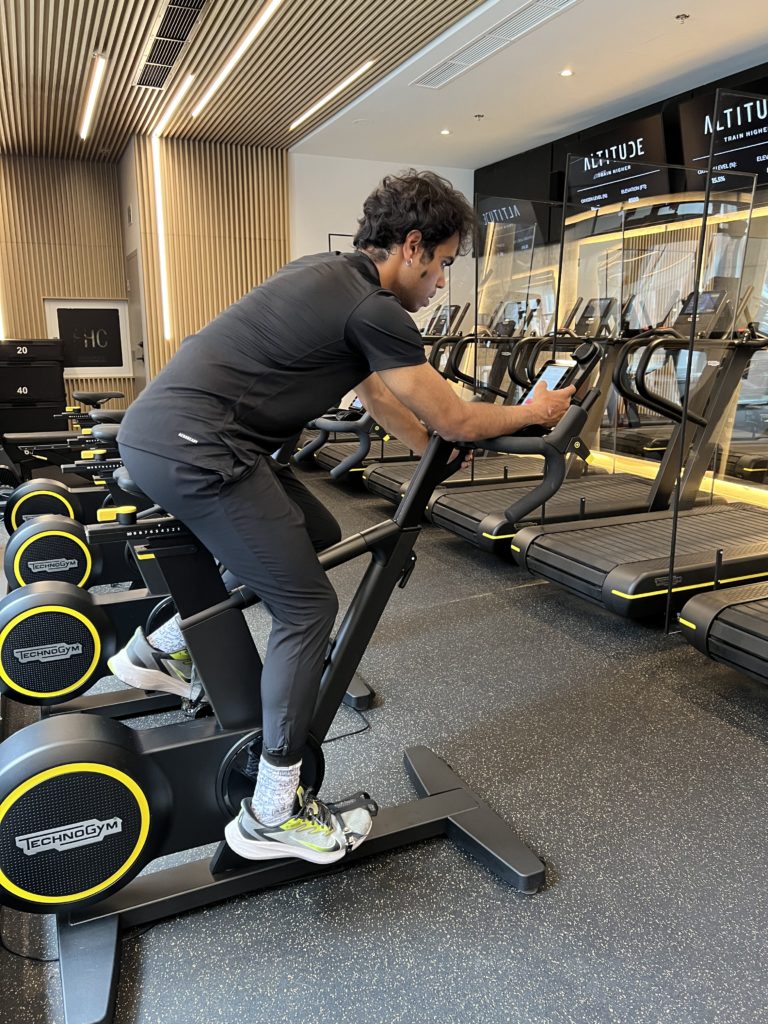Why altitude training will help your clients get better results during rehab?
Most of us expect to lose some level of conditioning when we get injured. But that doesn’t have to be the case.
Altitude training for sports rehab can be used to create a stimulus that maximizes aerobic output, while reducing training intensity and load on recovering tissue.
Therefore, sessions at simulated altitude (i.e a walk on the treadmill in a simulated altitude chamber or a spin on the bike with an altitude mask) can be done at lower intensities with greater benefit and help recovering clients maintain cardiovascular fitness while injured.
The goal is to mitigate the de-conditioning effect and accelerate the re-conditioning process, providing maximum aerobic adaptations during recovery.
Injuries are never easy, but with intelligent program design and training, clients can get back to full fitness faster and stronger than before.

Minimize De-conditioning, Maximize Re-conditioning
Altitude Athletic can facilitate the return-to-fitness process using specific altitude protocols designed to maintain cardiovascular fitness during injury.
Protocols can be either passive (Intermittent Hypoxic Breathing*) or active and built for varying levels of exercise tolerance.
*Intermittent Hypoxic Breathing (IHB) consists of breathing very low oxygen air from a stationary position (seated) in a series of intervals interspersed with sea-level breathing.
Altitude Training for Sports Rehab: Training Recommendations
- “My client is recovering from an injury and can still exercise.”
If you have a client who can still train actively, use an active intermittent hypoxic training protocol.
For instance, a protocol that has been used for this scenario is 30 minutes of continuous aerobic exercise as close to 75% of max heart rate as possible at 14.5% O2. The goal is to ease the client into a reconditioning program that still elicits a greater performance adaptation. Therefore, reconditioning is more effective and faster than it would have been at sea level.
- “My client is recovering from an injury and cannot tolerate exercise.”
If your client is struggles to exercise – for example an elderly individual or someone with cardiovascular disease – use a passive breathing protocol. These protocols are based on a tolerance test, for example: 4-6 rounds, 3-5 minutes ON 3-5 minutes OFF at 14.5%-10% O2.
With severely de-conditioned individuals, passive exposures can increase fitness level, aerobic capacity, exercise tolerance, performance and quality of life. Passive exposures can also offset some level of de-conditioning.
Opportunities for Physios and Clinics
By building altitude training into your client’s rehabilitation, you now have a solution to minimize unnecessary de-conditioning and maximize re-coniditioning at the acute and post-injury stages. The result is happier clients, better results achieved faster and greater success for your practice.
You’ve also opened the door to populations with low-exercise tolerance who previously had few solutions for re-conditioning. Intermittent Hypoxic Breathing is game-changing for their health and quality of life. The opportunities provided from this new market will offer a huge boost to your business.
References
(5) Effects of systemic hypoxia on human muscular adaptations to resistance exercise training
(6) The effect of acute exercise in hypoxia on flow-mediated vasodilation


